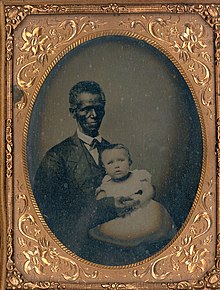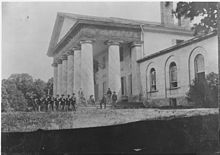| Syphax | |
|---|---|
 Mariah Carter Syphax was the matriarch of the family. | |
| Parent house | Dandridge family Calvert family |
| Current region | America |
| Place of origin | Virginia |
| Founded | 1825 |
| Founder | Charles Syphax Mariah Carter Custis Syphax |
| Connected families | McKee family Yamamoto family |
| Estate(s) | Arlington |

The Syphax family is a prominent American family in the Washington, D.C., area. A part of the African-American upper class, the family is descended from Charles Syphax and Mariah Carter Syphax, both born into slavery. She was the daughter of an enslaved woman and planter George Washington Parke Custis, only grandson of First Lady Martha Washington.[1]


The family became part of the free people of color in Washington, D.C., before the Civil War. Maria (Mariah) Carter was born into slavery, the mixed-race daughter of planter George Washington Parke Custis (1781–1857), the only grandson of Martha Washington through her first marriage.[2] Mariah's mother was Ariana Carter, one of Custis's house slaves. [3]
Considered part of the elite of African-American society, the Syphax family gained early advantages by their being freed before the war, and by Mariah Syphax being granted 17 acres of land at Arlington by her father Custis. That land later was acquired by the government to become part of Arlington National Cemetery.
When Mariah Carter asked her father for permission to marry Charles Syphax, one of his slaves, he allowed them the unusual benefit of marrying in his Arlington mansion. Later that year, he granted Mariah seventeen acres of his Arlington estate.[a] Mary Custis (1808–1873), Mariah's white half-sister, married Robert E. Lee (1807–1870), who became a Confederate general when the Civil War broke out.[5]
Mariah and Charles had ten children, several of whom achieved important political positions from the 1850s onward.[4]
Several of the Syphax descendants became Catholics.